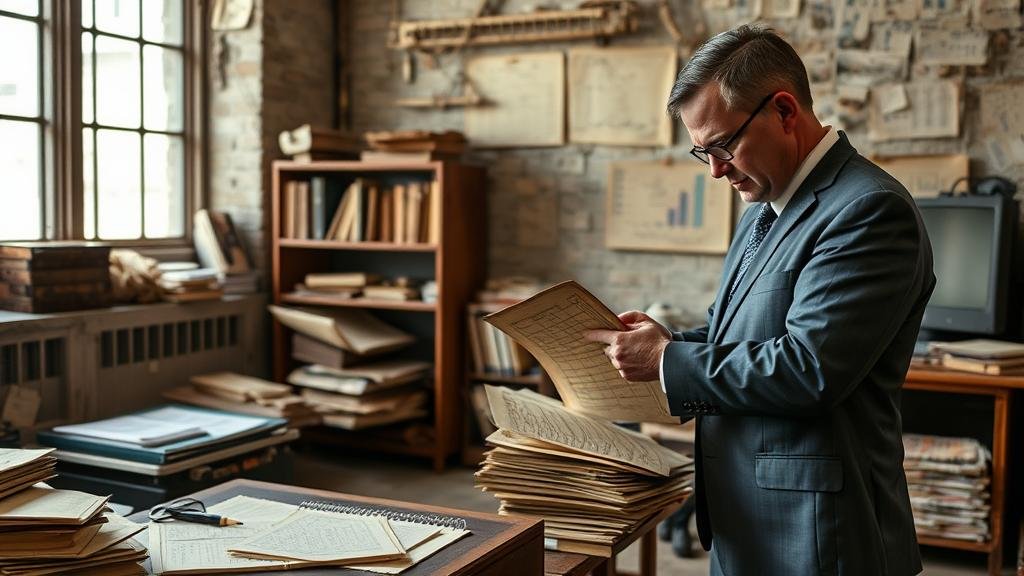Unearthing Old Bills and Ledgers in Forgotten Office Buildings
Unearthing Old Bills and Ledgers in Forgotten Office Buildings
In the annals of business history, old bills and ledgers serve as a window into the past, providing insights into economic trends, consumer behavior, and corporate practices. The process of uncovering these valuable documents in forgotten office buildings offers not only a fascinating glimpse into previous eras of commerce but also aids in preserving historical records. This article delves into the significance of these documents, the methodology for recovering them, and the implications of their discovery.
The Historical Significance of Old Bills and Ledgers
Old bills and ledgers hold immense historical value as they encapsulate the economic activities of their time, from detailed transactions to comprehensive inventories. tell the story of businesses at various stages, reflecting the socio-economic conditions of their respective eras. For example, ledgers from the 1920s showcase the rapid industrial growth during the post-World War I economic boom, while bills from the Great Depression era reveal the struggles of businesses as consumer spending plummeted.
Also, these documents can provide a wealth of information regarding:
- Market trends and consumer preferences
- Pricing strategies and inflation rates
- Business relationships and networks
A notable example includes the discovery of 19th-century ledgers from a failed textile mill in Massachusetts, which not only detailed financial transactions but also shed light on labor practices and economic challenges of that time.
Methodology for Recovery of Documents
Unearthing old bills and ledgers involves a systematic approach to explore, document, and preserve findings in forgotten office buildings. Here is a comprehensive methodology commonly used:
1. Identification of Potential Sites
Identifying office buildings that are abandoned, repurposed, or scheduled for demolition is the first step. Many older structures, particularly those built before the mid-20th century, are likely to hold extensive historical records.
2. Obtaining Permissions
Legal access to these sites is crucial. This involves obtaining permission from property owners, often through formal requests or partnerships with local historical societies, thereby ensuring compliance with preservation laws.
3. Conducting a Thorough Investigation
A comprehensive physical search of the premises, especially focusing on basements, attics, and storage rooms, is essential. Utilizing specialized tools like digital cameras and archival boxes facilitates meticulous documentation of findings.
4. Preservation Techniques
Once uncovered, best practices for preservation include:
- Storing documents in appropriate archival conditions
- Digitizing records for online archival access
- Creating detailed inventories for academic and public engagement
For example, after discovering a cache of invoices in an old shipping warehouse in Seattle, historians digitized the records, making them accessible for research on maritime commerce in the Pacific Northwest.
Implications of Document Discovery
The implications of uncovering old bills and ledgers extend beyond mere historical curiosity; they affect various sectors such as academia, local economies, and cultural heritage preservation.
1. Academia and Research
Scholars and researchers leverage these documents to study business practices, economic history, and social dynamics over time. Access to detailed records allows for a more nuanced understanding of historical events.
2. Local Economies
Discoveries can lead to revitalization projects by showcasing a city’s rich commercial history. For example, the recovery of ledgers from a once-thriving downtown shop in Detroit contributed to heritage tourism, attracting visitors interested in local history.
3. Cultural Heritage Preservation
Preserving and showcasing these findings can foster a sense of identity and continuity within local communities. Organizations often use such discoveries to create exhibits that inform and engage the public.
Conclusion
Unearthing old bills and ledgers in forgotten office buildings offers valuable insights into economic history and business practices, fostering a deeper understanding of the societies that produced them. The meticulous recovery and preservation of these documents not only enhance our comprehension of the past but also serve as a tool for cultural identity and economic revitalization. For historians, preservationists, and local communities alike, the journey of uncovering these hidden treasures is both a challenge and an opportunity to reconnect with history.
In summary, the process involves careful planning, collaboration with various stakeholders, and adherence to preservation best practices, making it a significant endeavor that contributes to our understanding of economic history.



